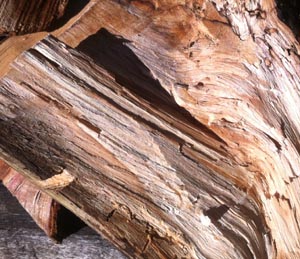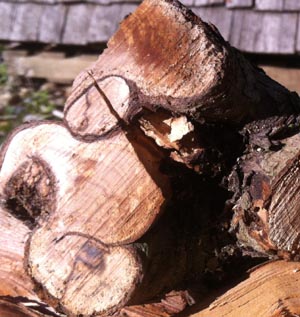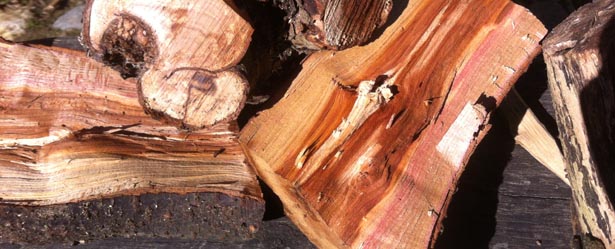Subscribe
to Orchard Barn's mailing list and receive
all
the latest offers on courses, volunteer tips and highlights and my
BLOGS
about the project ....
AND you'll be entered for a competition
to win a one
day course at Orchard Barn.
Get lucky.
Choose from the
Natural Building Experience, A Day in the Woods, Deadwood Screens,
Wattle and Daub, Intro to using Lime, Clay Selfies, Greenwood in
Building, Off-grid Compost Toilets ...

Elm log

Hawthorn
|
|
Preparing for
Winter 24.9.2018
Only three days since the Autumn
Equinox and the weather is turning inwards. Outside the temperature is
a mean 6 degrees. I’m grateful that Storm Ellie has blown herself out
but it feels too soon for the nights to turn cold. My thoughts turn to
firewood and keeping warm.
Arriving early at Orchard Barn I set
about splitting logs. There’s a selection of home grown wood to choose
from. I pull out seasoned Elm, Cherry Plum and Hawthorn. There’s a
place in the sun where I set up my chopping block. I am a chameleon
needing direct warmth from the sun’s rays before my body functions.
I choose a heavy felling axe. It has
the weight to open up the knarled grain of Elm. Each type of wood has
different characteristics. Elm (seasoned or green) is heavy with a
dense grain. It was used by the Romans for drainage pipes through
fields. I’m in awe that the Romans used long augers to tunnel their way
through the centre of these trees. Underground it has a durability
outstripped by other woods. I understand it was also used for the
pilings they built Venice upon. Much of our main barn is Elm and it’s
also our wood of choice for the new Craft
Barn. I digress easily …. If
I can persuade Elm to split it makes excellent firewood.
We are also blessed with an ancient
Cherry Plum tree. The Orchards
East Project believe it to be
unique to Orchard Barn and have taken cuttings for their Suffolk
Collection. The tree dropped a limb four years ago (it was both laden
with fruit and Plum wood is brittle). We used two sections as chaise
lounge arms for benches and the rest has been logged up. Some of it was
rotten and decays quickly with no calorific value for burning, but
yields mulch material instead. The pieces I’ve found are twisted with a
maroon coloured bark – a clue to the pinks, copper, cream and delicious aubergine I find
when I eventually persuade it to split.
After ten minutes of chopping I’m
warm on the inside and surrounded by beautiful firewood. Just take a
look at the colours in this Cherry Plum!

|
|